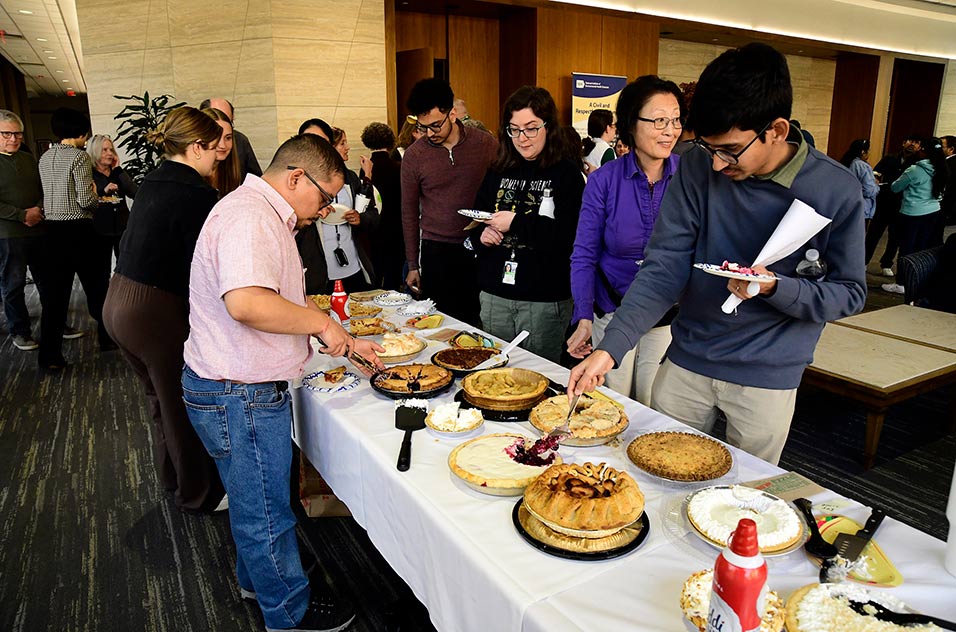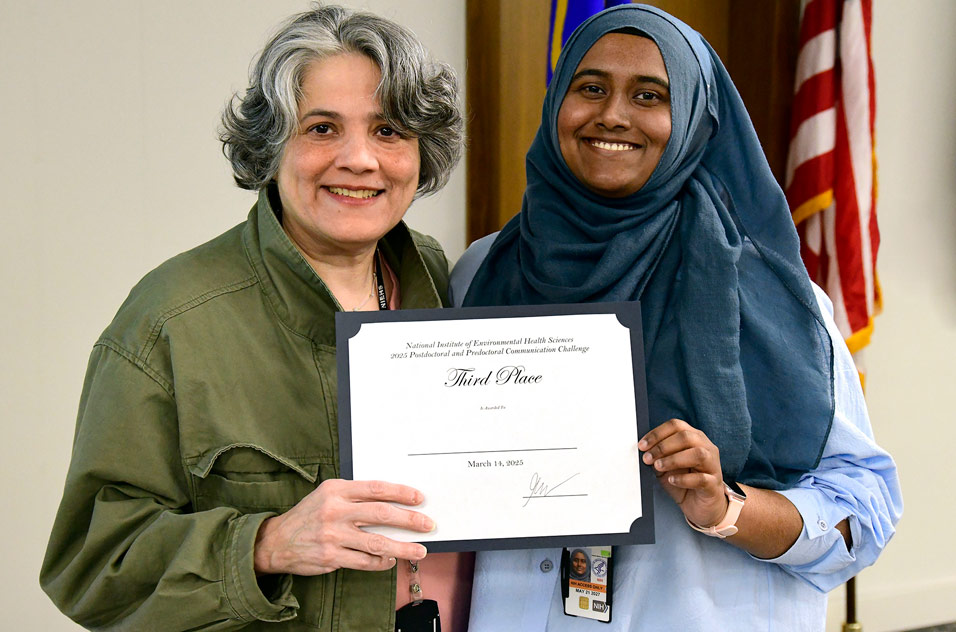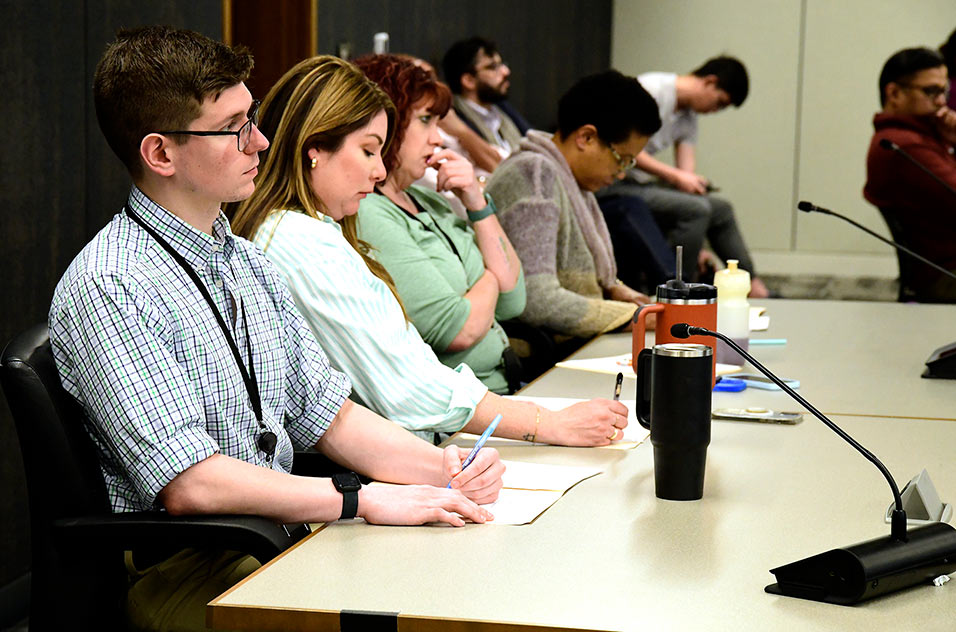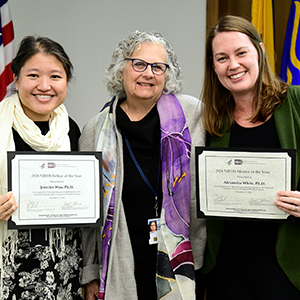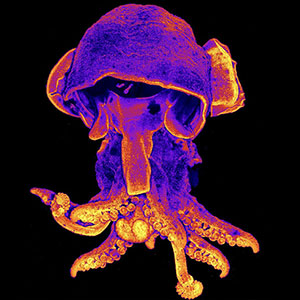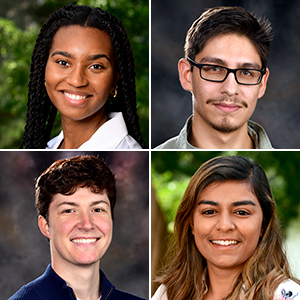Twelve NIEHS predoctoral and postdoctoral fellows took a few minutes away from their research on March 14 to describe their work. As participants in the Three-Minute Communications Challenge, they tested their ability to explain concepts clearly, in terms understandable to a broad audience, and within an established time limit.
The annual competition had a distinct Pi-day theme this year. Because the event took place on 3.14 — the day designated to celebrate Pi, the important mathematical constant used in geometry and the sciences — speakers were given 3:14 minutes to discuss their topics.
Entrants and audience members also were invited to sample an array of pies, while judges decided the top presentations.
Despite lightheartedly offering them dessert and 14 additional seconds at the podium, Mercedes Arana, Ph.D., director of the Office of Fellows Career Development (OFCD), reminded competitors of another crucial constant.
“Communicating your science to a broad audience is an absolutely essential skill to have,” she said. “So, we're always excited to host and offer this challenge.”
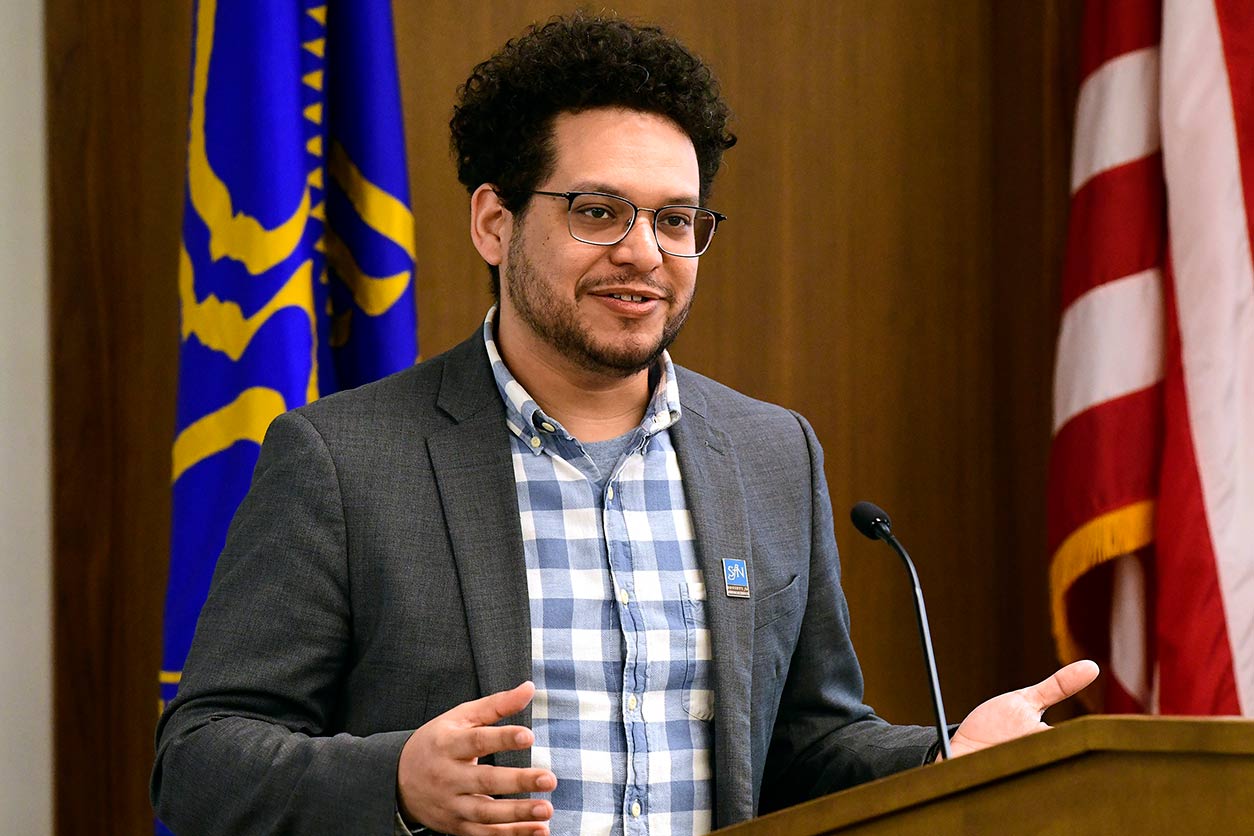
Three winners
A panel of judges selected three fellows for top honors in the competition. Each fellow received a $1,500 professional development award from OFCD.
Amilcar Rodríguez, Neurobiology Laboratory, earned first place, for his efforts to explain the relationship between the gut microbiome and Parkinson’s disease.
Michelle Klawans, Ph.D., Epidemiology Branch, garnered second place for her presentation of research into the impact of air pollution on fertility.
Safia Sauty, Ph.D., Genome Integrity and Structural Biology Laboratory, achieved third place, recounting her study of DNA damage and mutation profiles in healthy human skin cells.
The judges, drawn from NIEHS staff, evaluated participants’ presentations based on their ability to address three important criteria: the exact nature of their research, the impact of their work on science and society, and the personal benefit that they have received from their experiences at NIEHS.
Judges also assessed the fellows on intangible aspects of their presentations, including organization of information, clarity of speech and lack of jargon, poise and presence at the podium, and audience engagement.
Strong competition
Nine additional participants also gave strong presentations. The fellows, the NIEHS labs they represented, and their talk topics follow.
Kanda Borgognoni, Ph.D., Molecular and Cellular Biology Laboratory, explained the role of defective ribosomes in cancer formation.
Abhijnan Chattopadhyay, Ph.D., Immunology, Inflammation and Disease Laboratory, discussed the use of biological data to predict diseases that affect lung function.
Xiaosu Miao, Ph.D., Epigenetics and RNA Biology Branch, described her study of the poly A tail of messenger RNA as a path to improving RNA stability and efficiency.
Mahina Monsur, Ph.D., Genome Integrity and Structural Biology Laboratory, presented the role of DNA ligase 1 in genomic stability across generations and its influence on neurological disorders and cancers.
Sookjin Moon, Ph.D., Immunology, Inflammation and Disease Laboratory, explained how a membrane protein plays a role in helping T cells distinguish between healthy and cancerous cells.
Keyshla Negron Rios, Reproductive and Developmental Biology Laboratory, described how maternal obesity disrupts placental management of nutrients influencing fetal development and later health.
Uma Shankar, Ph.D., Epigenetics and RNA Biology Branch, shared research on the role of mitochondrial pausing in gene regulation.
Preston Siegler, Neurobiology Laboratory, discussed the effects of prenatal stress on the brain and behavior.
Shruti Somai, Ph.D., Genome Integrity and Structural Biology Laboratory, explained her study of mitochondrial DNA replication and the effects of mutations.
A true challenge
Although the judges chose only a few winners, Arana was impressed by the effort of all speakers and pleased with their commitment to improve communication skills. She noted that scientists who have devoted so much effort to their research often find it challenging to present complex concepts in simple language. A time limit adds to the challenge.
“It’s not an easy thing to do,” she noted. “The more educated you are on a subject, the more difficult it is to present it briefly and in plain terms. This is why this exercise is critical.”
(Douglas Murphy, Ph.D., is a technical writer-editor in the NIEHS Office of Communications and Public Liaison.)





